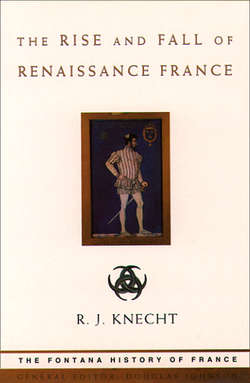Читать книгу The Rise and Fall of Renaissance France - R. Knecht J. - Страница 42
The battle of La Bicocca (27 April 1522)
ОглавлениеThe sudden death of Leo X on 1 December 1521 changed the situation in Italy. As the flow of money from papal coffers to Colonna’s army dried up, the French under Marshal Lautrec reorganized themselves. Much, however, hung on the result of the next papal conclave. Francis threatened to sever his allegiance to the Holy See if Cardinal Giulio de’ Medici, leader of the imperial faction in the Sacred College, were elected. In the event, the cardinals chose Adrian of Utrecht, Charles V’s old tutor and regent in Spain. Francis was understandably furious, but Adrian, who took the name of Hadrian VI, approached his new duties in a truly Christian spirit. Denying that he owed his election to Charles, he refused to be drawn into the anti-French league. His main objective was to pacify Christendom as the first step towards arranging a crusade against the Turks, who now threatened Rhodes, the last Christian outpost in the eastern Mediterranean. Francis, however, was more interested in regaining Milan.
In March 1522, Lautrec, whose army had been reinforced by 16,000 Swiss, laid siege to Milan, but, finding the city too strong, he turned his attention to Pavia. Francesco Sforza was thus able to put more troops into Milan, much to the chagrin of Francis who accused his captains in Italy of incompetence. He declared his intention of returning there himself, but was overtaken by events. Emerging from Milan, Colonna threatened Lautrec’s rear, whereupon the marshal lifted the siege of Pavia and marched to Monza. Colonna followed at a safe distance and encamped in the grounds of a villa north-west of Milan, called La Bicocca. He fortified his camp with ditches, ramparts and gun platforms. Lautrec saw the madness of attacking it, but his Swiss troops, who had grown tired of marching and counter-marching to no purpose, threatened to leave unless he engaged the enemy at once. He begged them to think again, but eventually conceded their demand. On 27 April they attacked the imperial camp only to be decimated. Some 3000 were killed, leaving the rest to return to Switzerland utterly humiliated. Lautrec, after a vain attempt to hang on to Lodi, returned angrily to France. His brother Lescun surrendered Cremona soon afterwards. On 30 May, Genoa capitulated. Only the castles of Milan and Cremona remained in French hands. The French débâcle in Italy was soon followed by England’s entry into the war. On 29 May an English herald appeared before Francis in Lyon and declared war in Henry’s name. Hostilities began in July when the earl of Surrey raided Morlaix. In September he led an army out of Calais and tried unsuccessfully to provoke the French into giving battle. Within a month, however, his supplies ran out, forcing him to withdraw to Calais.
While the princes of Christendom were fighting each other, Rhodes fell to the Turks. Hadrian VI urged the princes to sink their differences and join a crusade; but Francis insisted on Milan being restored to him first. The pope, he said, had no canonical right to impose a truce under threat of spiritual sanctions. He reminded Hadrian of the fate that had befallen Pope Boniface VIII in the fourteenth century when he had opposed the French king Philip the Fair. In June he banned the export of money from France to Rome and dismissed the papal nuncio from his court. These measures only served to drive Hadrian into the imperial camp. On 3 August he joined a league for the defence of Italy.
